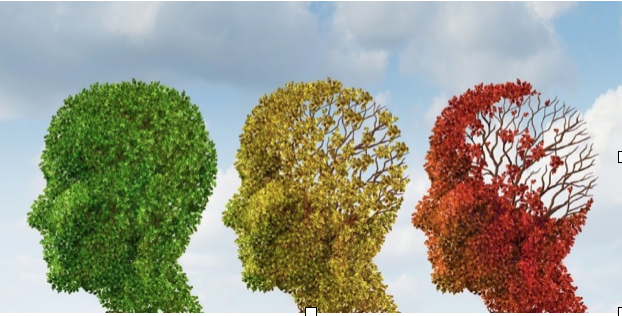Dedication
It’s estimated that 80% of North Americans over the age of 85 are suffering with some degree of dementia. Women are twice as likely as men to live with dementia, representing 70% of cases worldwide, and almost always in caregiving positions at some point for the men unlucky enough to suffer from dementia as well. In many cases, age-related dementia is misdiagnosed and is often considered to have been completely preventable, though further research is needed to help us with better comprehension, prevention, diagnostics, and education globally. This article is dedicated to the Women’s Brain Health Initiative (http://womensbrainhealth.org/), a charity that is doing great work advocating for women to the scientific community about the research required to ensure better brain health for this and future generations. I support this great charity and the inspiring work they are doing, and hope you will join me in supporting them as well: Donate Now

An Aging Workforce
As goes the expression, while aging isn’t fun, it’s certainly better than the alternative. While our bodies and faces often change noticeably with age, it can often be harder for anyone, including ourselves, to see or understand how our ‘black box’ brains are aging: especially as these changes aren’t just visually concealed, but are usually continuous and gradual.

In my work, I often talk to large groups about the aging, ‘greying’ workforce and the ramifications thereof—the global population is aging on the aggregate along with our workforces and this has obvious ramifications for employers, managers, organizations, government, as well as the employees themselves. The majority of the aging, working population are ‘Baby Boomers’ (aged approximately 52-70 today) – the healthiest, wealthiest, happiest generation to have ever lived: if ‘30 is the new 20’, often ‘70 feels like the new 50’, with Baby Boomers reporting greater levels of productivity and satisfaction in their work lives than generations before them reported at the same age. Because of this Baby Boomers have and are projected to continue to stay in the workforce longer than their ancestors typically wanted to or would have been able to—especially with mandatory retirement rescinded for most professions, in most developed nations.

This isn’t all just good news for the happy, healthy, wealthy, productive Baby Boomers, it’s been productive news for my training, talks, and research: the majority of a whole generation is now asking new questions, like “What does healthy, normal brain aging feel or look like?”, “What changes can I expect now and in the future?” , “What types of roles or projects should I opt into in order to present my best self and my best work?” Below I present some of the advantages of an aging brain in the workforce, as well as some research-based pointers for how to protect the healthy aging of your brain.
Listen to Steve Paikin and Dr. Brynn Winegard discuss the Aging Brain in the Workforce on TVO’s ‘The Agenda’ (2016).
Some Advantages of an Aging Brain in the Workforce
Though this often surprises people to hear, like a ‘fine wine that gets better with age’, so do some of the brain’s functional abilities. Functionally, our brains get better in four major ways: socially, emotionally, practically, and psychologically.
To start, as we all get older, we get better at emotional intelligence and interpersonal insight because of a more developed ‘mirror neuron system’ and ‘theory of mind’ abilities: years of dealing with others in all kinds of situations allows that our skills and ability to empathize, predict others’ behavior, understand others’ perspectives, harness real insight into others’ cognitive states, and to be able to thoughtfully considers others’ feelings or motivations in any given situation have significantly improved.

Further, because the older brain has a more developed prefrontal cortex, its ability to reason out cause and effect, consequence, longitudes, planning, big-picture thinking also gets better with age. Because of years of experience having watched things succeed and fail, the older brain is also better at being practical, less idealistic, and more realistic.
While idealism in a youthful brain is often seen as a likely coping mechanism against pessimism and depression, the older brain doesn’t need this buffer—our brains become more optimistic as we age! This works largely because negative memories decay first, leaving only the positive ones to reminisce with, while the brain uses past events and memories as a heuristic to predict the future, allowing a more positive outlook in life and typically higher levels of reported happiness over the life course in healthy brains—now that’s some very functional forgetting!
 Functional forgetting also likely allows opportunistic neural networks the ability to become better at ‘functional reorganization’—the brain’s neuroplastic ability to reorganize in order to compensate for faltering or decreases in other abilities.
Functional forgetting also likely allows opportunistic neural networks the ability to become better at ‘functional reorganization’—the brain’s neuroplastic ability to reorganize in order to compensate for faltering or decreases in other abilities.
Take all these more developed emotional, social, psychological and practical cognitive reasoning skills together, and we see that older brains are typically better than their younger selves at:
- Working in groups
- Dealing with ambiguity
- Understanding of multiple perspectives
- Management (self and other) skills
- Leadership skills
- Strategizing
- Long-term projects
- Mediating
- Practicality
- Realism
Allowing a more natural fit for older brains relative their younger selves in roles such as (examples):
- Planners
- Strategists
- Organizers
- Managers
- Leaders
- Facilitators
- Negotiators
- Mediators
- Arbitrators
- Counsellors
- Therapists
- Speakers
- Preachers
- Regulators
- Policy-makers
- Etc.
Keeping the Aging Brain Healthy
Here are some research-based tactics for how to keep your brain healthy throughout your career and life:
- Minimize and manage stress actively—it’s a killer
- Stay cognitively active and push your limits outside your comfort zone
- Keep learning and stay curious
- Stay physically active
- Stay sexually active
- Eat small amounts of nutritious food, often
- Brain foods include: chocolate, almonds, protein, berries, avocadoes, among others
- Honor your new circadian rhythms and health needs
- Volunteer your time
- Pick up a hobby
- Give back your time, energy, dollars (societal contribution)
- Mentor people
- Stay spiritual and faithful
- Remember to seek and use humor and laugh often
Did You Know? Some Fun Brain Facts
- Your brain is like your fingerprint—it’s function, anatomy, wiring are completely unique to you
- Your brain is producing enough electrical power at all times it could power a 40W bulb 24/7
- 70% of your thoughts are ‘negative’
- Our brains aren’t fully formed until the age of 25, though we start losing memory at age 24
- You have 200B neurons when you’re born, 100B at age 25, and about 86B at time of death
- Your brain uses up to 40% of all the oxygen you breathe and the calories you eat
 Dr. Brynn L. Winegard | Expert on Business-Brain Science
Dr. Brynn L. Winegard | Expert on Business-Brain Science
Dr. Brynn Winegard is an award-winning professor and expert in business-brain sciences. She specializes in explaining everyday work and life phenomena using the secrets of brain science, all with aim of making her audiences happier, healthier, wealthier, and more successful.
Learn more here: www.winegardcompany.com.
Book Dr. Winegard for a keynote here: http://nsb.com/speakers/brynn-winegard/